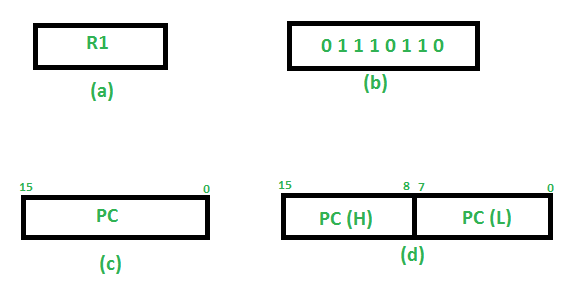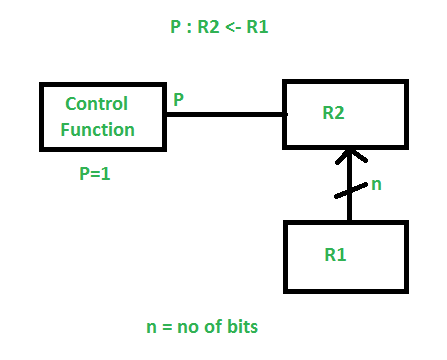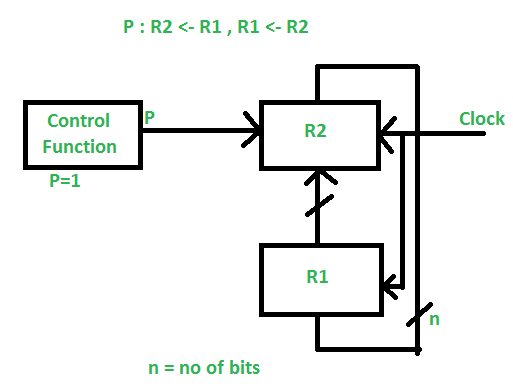Register Transfer Language (RTL)
Last Updated :
11 Feb, 2022
In symbolic notation, it is used to describe the micro-operations transfer among registers. It is a kind of intermediate representation (IR) that is very close to assembly language, such as that which is used in a compiler.The term “Register Transfer” can perform micro-operations and transfer the result of operation to the same or other register.
Micro-operations :
The operation executed on the data store in registers are called micro-operations. They are detailed low-level instructions used in some designs to implement complex machine instructions.
Register Transfer :
The information transformed from one register to another register is represented in symbolic form by replacement operator is called Register Transfer.
Replacement Operator :
In the statement, R2 <- R1, <- acts as a replacement operator. This statement defines the transfer of content of register R1 into register R2.
There are various methods of RTL –
- General way of representing a register is by the name of the register enclosed in a rectangular box as shown in (a).
- Register is numbered in a sequence of 0 to (n-1) as shown in (b).
- The numbering of bits in a register can be marked on the top of the box as shown in (c).
- A 16-bit register PC is divided into 2 parts- Bits (0 to 7) are assigned with lower byte of 16-bit address and bits (8 to 15) are assigned with higher bytes of 16-bit address as shown in (d).

Basic symbols of RTL :
| Symbol |
Description |
Example |
| Letters and Numbers |
Denotes a Register |
MAR, R1, R2 |
| ( ) |
Denotes a part of register |
R1(8-bit)
R1(0-7)
|
| <- |
Denotes a transfer of information |
R2 <- R1 |
| , |
Specify two micro-operations of Register Transfer |
R1 <- R2
R2 <- R1
|
| : |
Denotes conditional operations |
P : R2 <- R1
if P=1
|
| Naming Operator (:=) |
Denotes another name for an already existing register/alias |
Ra := R1 |
Register Transfer Operations:
The operation performed on the data stored in the registers are referred to as register transfer operations.
There are different types of register transfer operations:
1. Simple Transfer – R2 <- R1
The content of R1 are copied into R2 without affecting the content of R1. It is an unconditional type of transfer operation.
2. Conditional Transfer –

It indicates that if P=1, then the content of R1 is transferred to R2. It is a unidirectional operation.
3. Simultaneous Operations –
If 2 or more operations are to occur simultaneously then they are separated with comma (,).

If the control function P=1, then load the content of R1 into R2 and at the same clock load the content of R2 into R1.
Like Article
Suggest improvement
Share your thoughts in the comments
Please Login to comment...